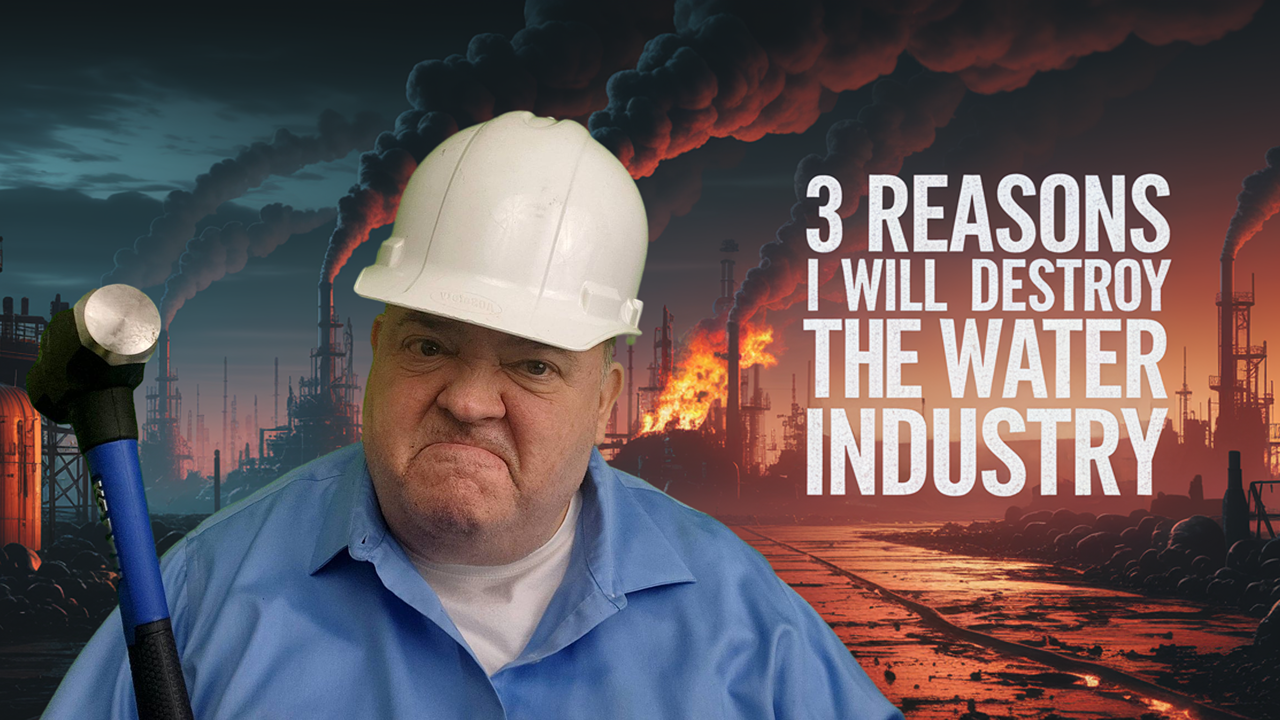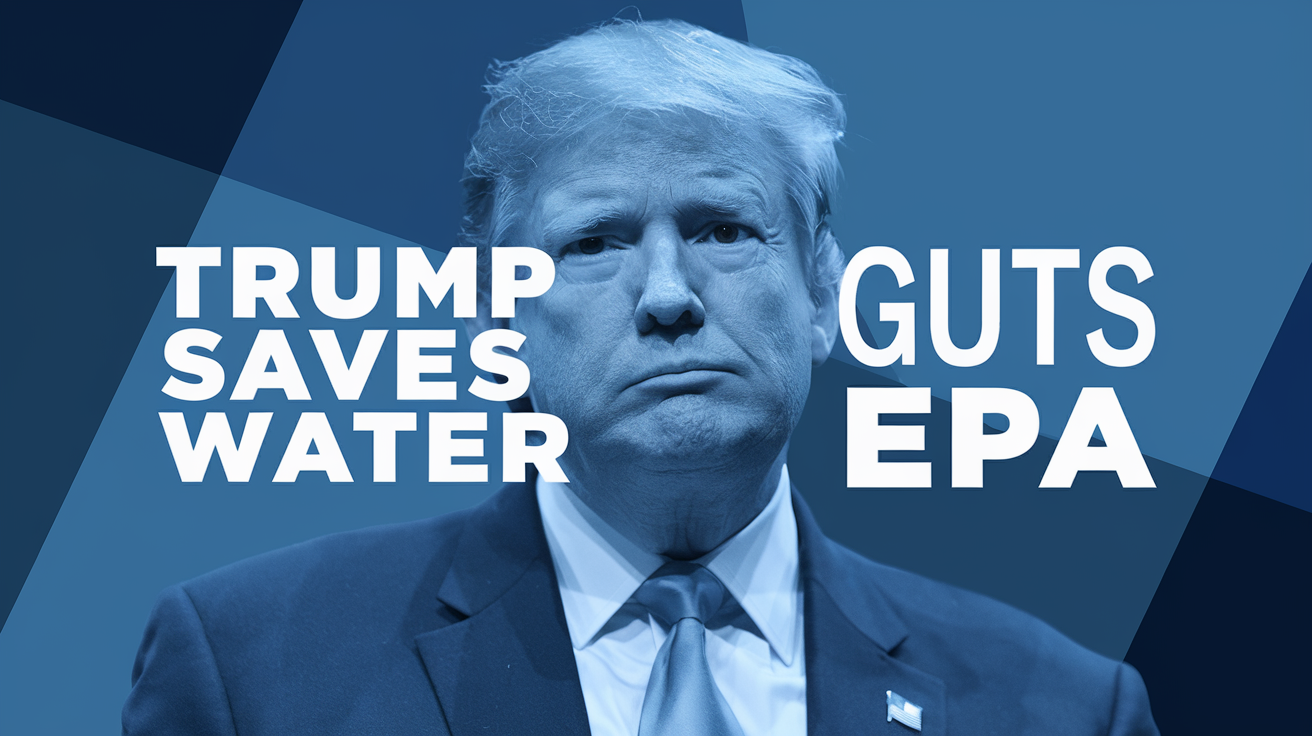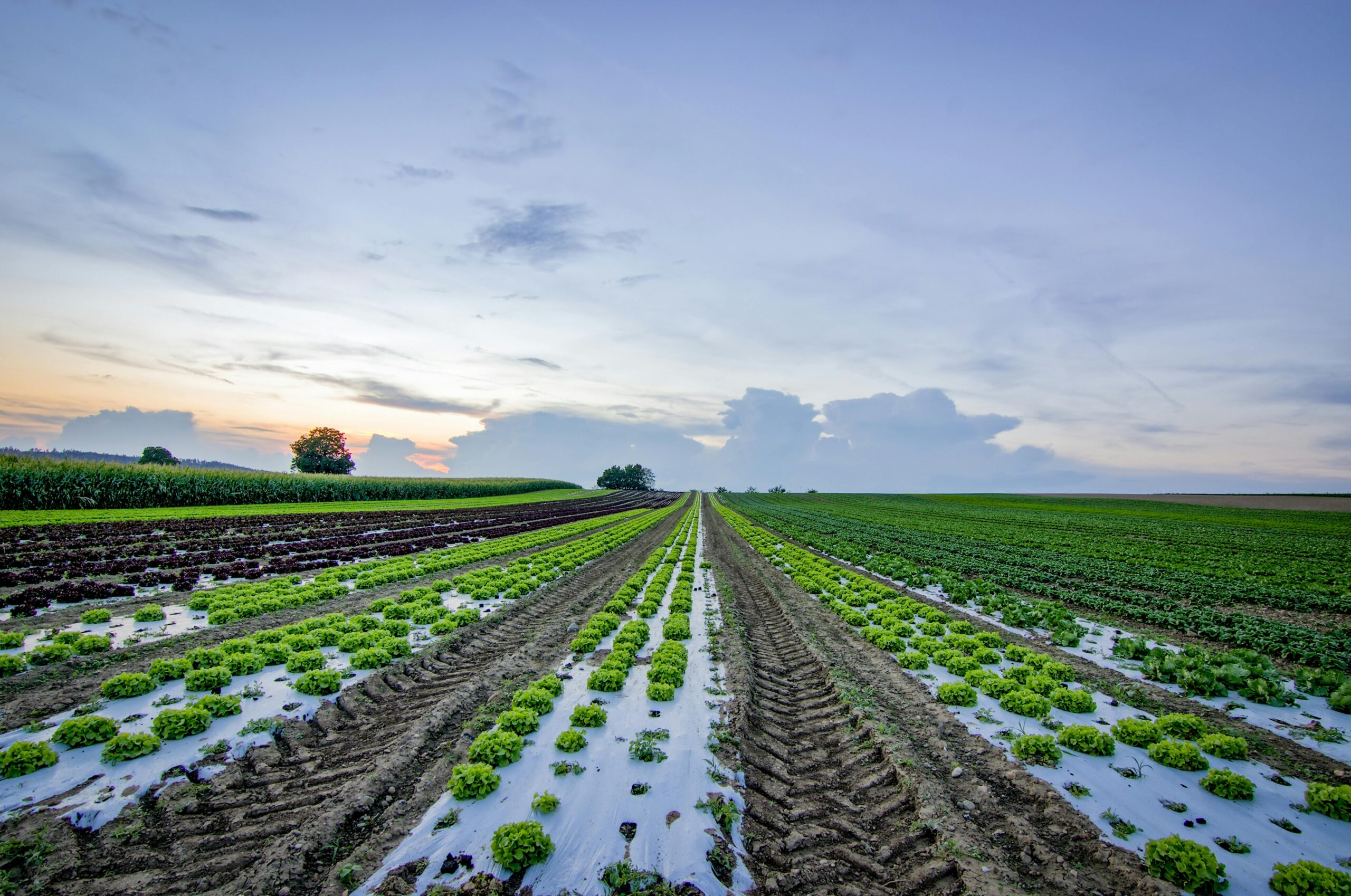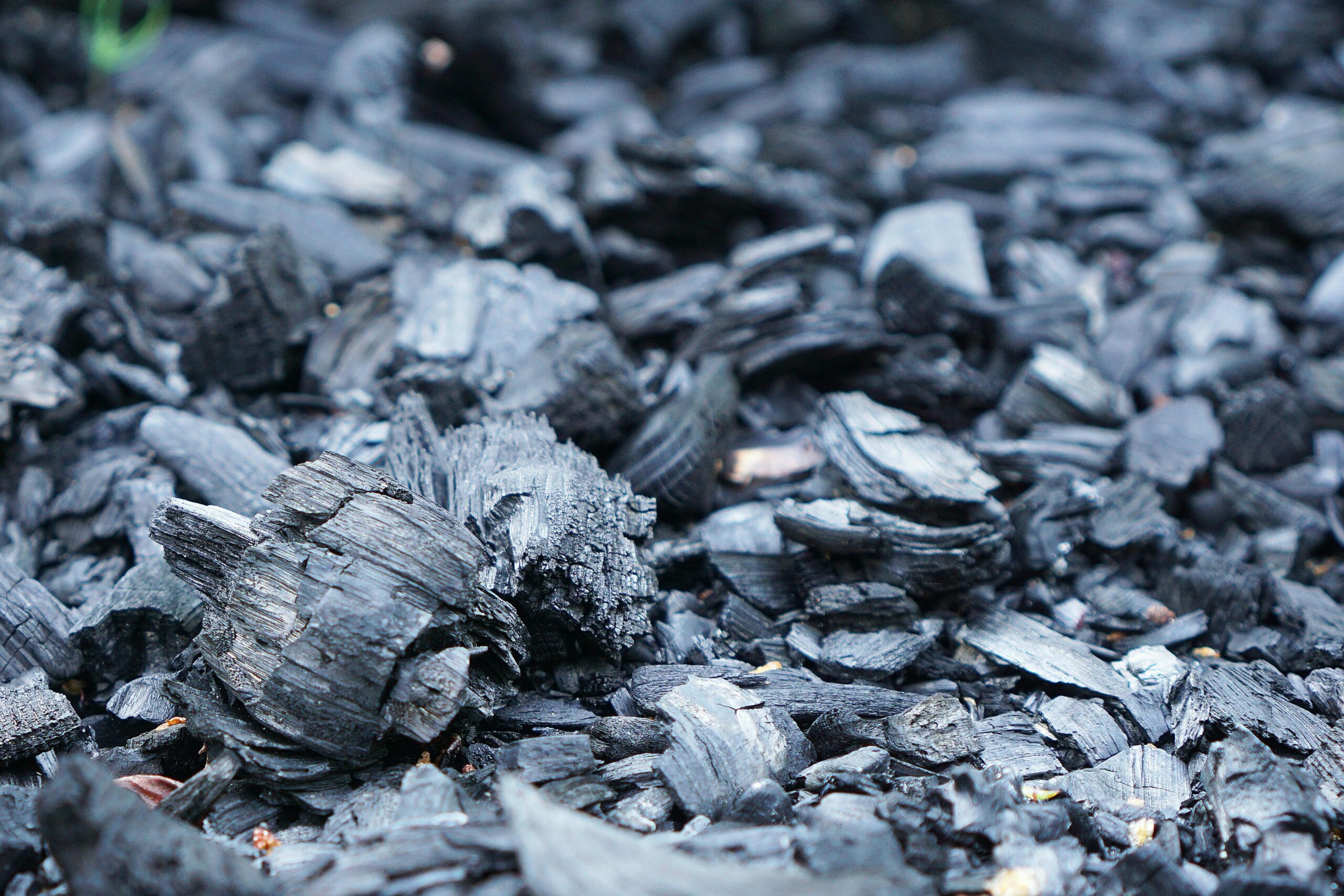- The EPA
In times of environmental catastrophe Americans always look to the EPA for resolution, advice, leadership and even comfort. There can be no debate that the EPA has come to our rescue in countless disasters and has protected us with a library full of health and safety standards and recommendations. To substantiate our faith in the organization we have witnessed famous lawsuits in which the EPA has come to the defense of we Americans, many times punishing corporations for their pollution of our air, land and water.
Furthermore, when it comes to water, perhaps the greatest health blessing we could ever hope for is the Safe Drinking Water Act (SDWA), the document enforced by the EPA, that prescribes the standards for the best drinking water in the world.
With all of this, how odd is it that I would label the EPA as one of our most deadly water problems?
Sadly, on many occasions the EPA is confused about its real responsibility. Too many times the EPA, when faced with the protection of flora and fauna versus the protection of Americans, has chosen the former. Too many times when faced with doing the right thing in the face of causing powerful corporate and government entities to suffer great costs, it has minimized contamination events and helped sweep them under the rug. Adding insult to injury, there have been many times when it has been the EPA that has put Americans at environmental risk due organizational inadequacies or outright mistakes. Let us examine just a few occurrences that fortify my criticisms.
- Rotenone is a carcinogenic agricultural insecticide/pesticide [1] that among other things the EPA has approved for the control of certain “undesirable” fish in our aquatic systems. Out in California, in lake Davis, a major source of drinking water, Rotenone was approved to reduce/eliminate Northern Pike. [2]
What is so horrible about Northern Pike? Well, it seems that the pike like to feast on trout, which happen to be a source of economic prosperity for the small tourist town of Portola.
So, what we have is the EPA purposely putting a carcinogenic chemical into a major drinking water source, because they decided think that it is they, and not nature that should determine fish population. To me this reeks of a political payoff. If it was not due to a payoff, then it is due to incompetence. Either way our EPA is not of irrefutable character.
- On August 5th, 2015, the EPA accidentally released one million gallons of toxic industrial wastewater into the Animas River, a tributary to the Colorado River [3]. The toxic water contained metals like arsenic, lead, copper and chromium. It wasn’t until five days later, on August 10th, that we learned about this blunder.
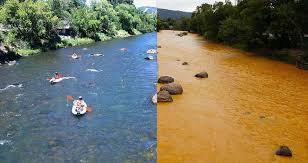
The Animus River before and after the EPA contaminated it. How is this different than a corporate error?
Can you imagine the uproar if it was a major corporation that caused this pollution? The media would have inundated us with stories about the evil offender. But because it was the EPA themselves making the mistake we were left with an “oops, nothing to see here.” Nobody was fired or prosecuted. So why the double standard?
- On March 9th, 2023, a Norfolk Southern train carrying toxic organic chemicals derailed in East Palestine, Ohio. Reportedly a lot of the chemical was polyvinyl chloride (PVC). The accident caused chemicals to spill out. Almost immediately, the EPA set the chemicals on fire to destroy/neutralize them. The theoretical reasoning for the burning is rooted in basic organic chemistry. When burned, organic chemicals will produce heat, water and carbon dioxide. With this knowledge at hand a reasonable person would conclude that the EPA was smart to destroy these chemicals before they could contaminate the air and water in a more widespread fashion. Unfortunately, there was a health threatening caveat that the EPA overlooked.
In the world of organic chemistry there are only 4 main ingredients required to create an infinite possibility of organic chemicals. The combination of carbon, oxygen, hydrogen and heat are the basis for creating plastics, oils, fats, alcohols, pesticides, gasoline, and many products we use today.
When the chemical spill at East Palestine was ignited, while it destroyed most of the PVC, only God knows what other/new toxic organic chemicals were created in the fire, smoke, and cooling. In my opinion, the authorities ignited the PVC so they could perform tests on the known chemicals and assure the public that the danger was subdued, knowing full well that there was no practical way to test for perhaps 1,000 new chemicals that may have been created.
So, there you have it. This is my case for calling the EPA a threat to our water. In too many cases the EPA will minimize contamination to help government officials and agencies go back to business as usual while the same exact contamination by a corporation results in fines and prosecution. The other problem with the EPA is that we have seen time and time again that when faced with protecting citizens versus protecting animals and plants, they choose the animals and plants. The EPA does this regularly, and without guilt because after all their charge is to protect the environment and not people. We need to remember this.
[1]https://www.adfg.alaska.gov/index.cfm?adfg=rotenone.health#:~:text=The%20World%20Health%20Organization%20classifies,caution%20is%20required%20during%20handling.
[2] https://beyondpesticides.org/dailynewsblog/2007/10/in-california-fish-and-drinking-water-poisoned-with-rotenone/
[3] https://www.npr.org/sections/thetwo-way/2015/08/10/431223703/epa-says-it-released-3-million-gallons-of-contaminated-water-into-river
2. Lack of Water Filter Oversight
As incredulous as this sounds there is currently no government oversight or regulations that apply to the water filtration industry. The FDA is not involved because they don’t consider filters a food or drug. Why the EPA is not involved I have no idea.
To be clear, there are regulations as to how the filter is manufactured. These regulations are no different than those required for making a toilet brush. To clarify, a product can’t use hazardous chemicals, it can’t cause choking in children, and it can’t harm the person packing, shipping, and handling it. But there is nothing in our government that dictates what the water coming out of a filter must be.
When we do have are two for-profit organizations that create industry standards and certifications. As I have criticized before, the Water Quality Association (WQA) and National Sanitation Foundation are two fee-charging companies that unscrupulously give the public the impression that the filter products they are purchasing will deliver safe, so-called pure water. As I have written before, these products are all well-made and tested to the highest standards. I have no issue with that. However, if you are purchasing a water filter, be advised that there is not one product that you can buy that guarantees to give you safe drinking water.
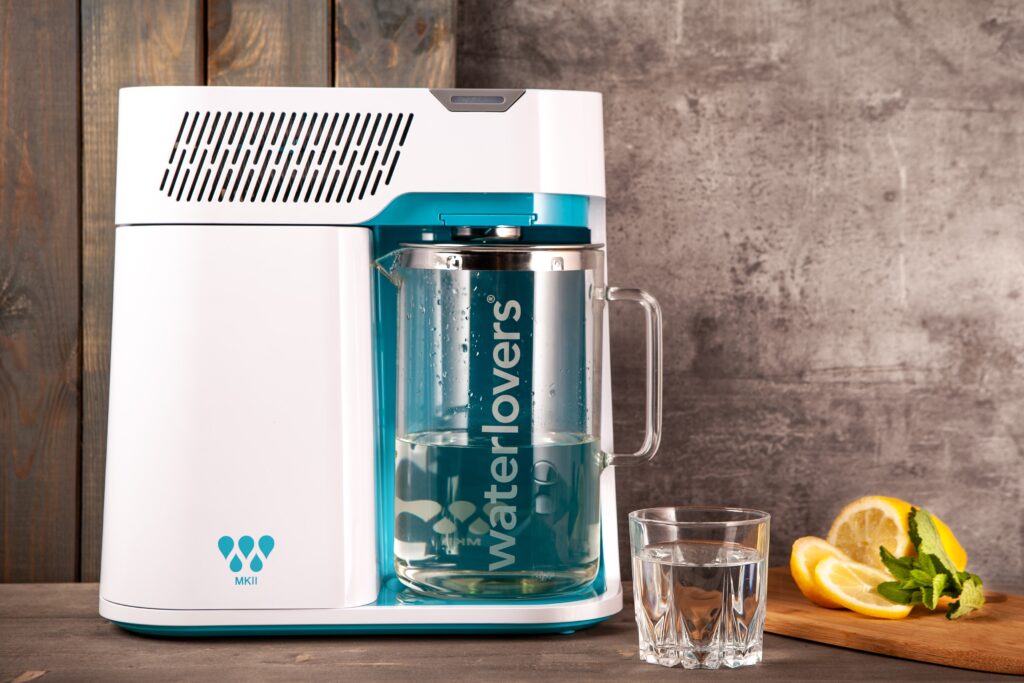
“The WQA does not currently test and certify for publication products to standards set by the Environmental Protection Agency“
Mike Sennet – Chief Legal Officer, Water Quality Association
As we speak there are several ongoing major lawsuits against various filtration companies where customers we harmed from the water coming out of the filters they assumed we safe. The takeaway here is that the terminology “safe filter” does not promise safe water.
As our water sources continue to become more contaminated, the need for oversight of filter water quality will grow exponentially. Our health depends on it.
3. Excessive and Unplanned Real Estate Development
I feel safe in assuming that there isn’t a single engaged American who is not aware of our diminishing lakes, rivers and ponds. The most famously broadcast example of this has been aerial views of the shrinking Colorado River, and Lake Mead. While record rainfall and snowfall have returned levels to normal in many of our waterways, the overall tendency of too many of our aquifers is trending toward running dry.
While it is popular to blame climate change for this phenomenon, the real reason water levels are decreasing is because population growth is causing us to draw more water than mother nature can replenish. The US Population was only 150 million in 1950, while today the population is roughly 350 million[4]. We must ask ourselves, other than the creation of Lake Mead, what great water conservation projects has America undertaken in the past 75 years? We can’t point to many.
We constantly build new cities and infrastructure. Unexplainably we push growth in areas that have limited water resources, and then complain of water shortages. It is our behavior and not Earth’s behavior that is causing us to have water shortages.
To make matters worse groundwater.org has identified five catastrophic water trends being caused by pulling out more water than our underground sources can supply.
- Lowering the Water Table. Excessive pumping can lower the groundwater table, and cause wells to no longer be able to reach groundwater.
- Increased Costs. As the water table lowers, the water must be pumped farther to reach the surface, using more energy. In extreme cases, using such a well can be cost prohibitive.
- Reduced Surface Water Supplies. Groundwater and surface water are connected. When groundwater is overused, the lakes, streams, and rivers connected to groundwater can also have their supply diminished.
- Land Subsidence. Land subsidence occurs when there is a loss of support below ground. This is most often caused by human activities, mainly by the overuse of groundwater, when the soil collapses, compacts, and drops.
- Water Quality Concerns. Excessive pumping in coastal areas can cause saltwater to move inland and upward, resulting in saltwater contamination of the water supply[5].
If modern real estate development is not somehow forced to consider water sources before building, many of our newest, most prestigious communities are going to wind up being dry gulches.
[4] https://www.macrotrends.net/global-metrics/countries/USA/united-states/population
[5] https://groundwater.org/threats/overuse-depletion/#:~:text=Excessive%20pumping%20can%20lower%20the,well%20can%20be%20cost%20prohibitive.
4. Lack Of Cooperation From City, State, And Federal Authorities
Our history is overflowing with instances of water rights battles. Whether is cities, corporations, and farms suing each other for diverting water; states suing each other over who get to use water and how much; or the federal government sticking its head into how private citizens can use water on their own land, water remains a voraciously contested entity.
As we look across our map we see areas such as the American west that are in the midst of life-changing water shortages, while at the same time people in the Great Lakes area are drowning in water, no pun intended. Out west we face forest fires and drought and yet an infinite supply of saltwater sits close and remains largely untapped.
We not only face a cooperation challenge but a technical one, too. Make no mistake, desalinization has a lot of complications. It consumes a lot of energy and creates a lot of salt-bearing waste. Pipelines seem like a great idea, but we must remember that a water pipeline must be much larger than an oil pipeline because of the huge demand involved. My hometown, Memphis for example, consumes more than 200 million gallons of water per day. How the hell would we pipe that much water from say, Lake Erie? Also, what if there were 20 cities needing water? The transported water might deplete the lake.
The takeaway here is that for all the opining about water solutions, America doesn’t even have a skeleton of an idea as to how different states and cities could forge a national water plan.
The time is coming soon when lives literally may depend on cooperation across political and geographical lines to find water solutions
Conclusion
We continue to take water for granted. I am not the first to lament that we never really care about water until we open the tap, and nothing comes out, or what comes out is poison. If we are being honest, citizens, government, and industry all continue to treat water as if we have an infinite supply of it. We continue to blame our water woes on each other and only step up when there is a crisis. Water is not something that should be a struggle for us. My hope is that one day we will have a Secretary of Water with the authority to begin developing permanent, long-lasting solutions to our water problems. Without such a leader, I don’t think that we have the discipline and foresight to cooperate among each other.



